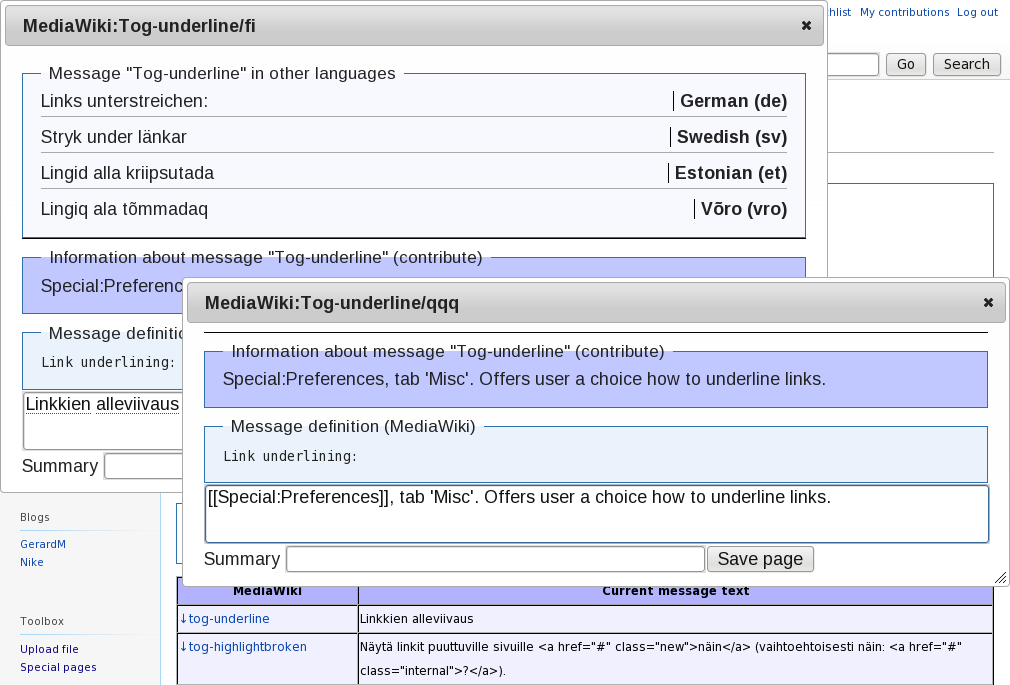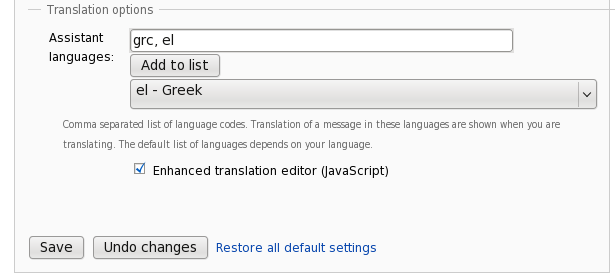Ensimmäinen Hack-A-Ton oli 22.–24. lokakuuta 2010 Washington D.C:ssä. Hack-A-Ton on Wikimedia Foundation järjestämä tapahtuma, joka on suunnattu kaikille MediaWikistä kiinnostuneille kehittäjille. Hack-A-Tonien painopiste on enemmän koodaamisessa kuin esitelmissä ja keskustelussa, mutta jälkimmäisiäkin kyllä oli tällä kertaa. Tämä postaus on lähinnä kommentoiva kertomus matkasta, ja varsinaisesta tapahtumasta voi lukea Wikimedia Techblogin raporteissa ensimmäisen ja toisen päivän osalta.
Lähdin matkaan torstaina ja ensimmäinen lento nousi maasta joskus kahden aikoihin. Lentoyhtiöinä toimivat tällä kertaa Lufthansa ja United Airlines mennen tullen. Välipysähdystä ja vaihtoa varten koukattiin Frankfurt am Mainin kentälle. Siellä on outo käytäntö, että lennoille on aluksi määritelty vain siiven kirjain (A, B, C…), mutta ei varsinaista porttia. Ja yksi siipi ei tosiaankaan vastaa yhtä kerralla läpi kuljettavaa tilaa, vaan se voi esim. olla useassa eri kerroksessa, tai puolet siitä voi olla passintarkastuksen takana ja puolet ei. Varsinkin paluumatkalla jouduin odottelemaan yli tunnin, ennen kuin infotaulut rupesivat näyttämään lähtöporttia.
Kummallisuuksista huolimatta selvisin määränpäähäni Dullesin kansainväliselle kentälle ongelmitta ja ajallaan. Pääsimme johonkin terminaalin siipeen, josta yllättäen meidät kuljetettiin lentokenttä”bussilla” pääterminaaliin. Tämä bussi on noin neliönmuotoinen kaksikerroksinen koppero, jossa kuljettaja istuu jommassa kummassa päässä keskellä omassa kopperossaan. Varsin mielenkiintoinen kuljetusväline.
Tämän jälkeen olikin CBP, jossa sain jonottaa varmaan puolitoista tuntia, koska koko pariin koneen matkustajia oli aluksi vastaanottamassa vain kolme virkailijaa, joista yksi henkilökunnalle, yksi Yhdysvaltain kansalaisille ja yksi meille muille. Lopulta virkailijoita tuli enemmän ja jonoi alkoi edetä siedettävää tahtia. Itse tarkastus meni nopeasti ilman kysymyksiä, ja sormenjäljetkin oli otettu jo viime kerralla kun kävin San Franciscossa. Toisessa tarkastuspisteessa kyllä ihmettelivät ja kyselivät, miksei minulla ollut muita matkatavaroita kuin reppu.
Lopulta pääsin odottelemaan Metrobussia 5A, jolla pääsisin keskustaan kuudella dollarilla. Kello oli jo noin yksitoista kun pääsin perille L’Enfant Plazalle. Matkan aikana huomasi, että teitä valaistaan paljon vähemmän kuin täällä kotisuomessa. Alkuperäinen tarkoitus oli kävellä puistojen läpi vajaa viisi kilometria luoteeseen hotellille, mutta paikallisten opastamana päädyin kuitenkin metroon, joka lähti mukavasti bussin päätepysäkin läheltä. Pyysin metrovalvojalta apua lippuautomaatin käytössä, ja vajaalla kahdella dollarilla ostin lipun jolla pääsin Foggy-Bottom GWU (George Washington University) -asemalle sinistä linjaa pitkin. Omaa metroani odotellessa näin kuinka liikemieheltä varastettiin ilmeisesti minikannettava kädestä varkaan juostessa toiseen suuntaan menevän metron sulkeutuvien ovien läpi.
Metrosta poistuttuani harhailin pienen kiertolenkin kautta Melrose Place -hotelliin samalla katsellen pimeitä GWU-yliopiston rakennuksia, jotka jatkuivat monen korttelin ajan. Hain avainkortin vastaanotolta ja huoneen ovelleni päästyäni kuulin jo ennen oven avausta kovaäänistä kuorsausta. Sisällä oli translatewiki.netiä ylläpitävä hollantilainen ystäväni Siebrand, joka heräsi metelöintiini. Päätimme lähtiä etsimään myöhäistä ruokaa, kuten olimme aiemmin sopineet. Ainoa avoin paikka oli kebab-tyylinen mesta, josta tilasimme curry kanaa, papuja ja riisiä, joita oli valmiina ruokatiskillä. Syötyämme palasimme hotellille ja menimme suoraan nukkumaan – tosin omat yöuneni jäivät vähäisiksi aikaeron ja kuorsauksen takia.
Seuraavana aamuna haukkasimme kaikilta puolin tavallista hotelliaamupalaa hotellin ravintolassa. Sen jälkeen pikavisiitti paikallisella Starbucksissa tarkastmassa sähköpostit yms. ilmaisen langattoman verkon kautta. Sen jälkeen kävelimme Georgetownin MacStoreen, jossa ystäväni teki ostoksia. Kaikki näytti täysin erilaiselta päivänvalossa (eiliseen yöhön verraten), ja lukuisat viheralueet ja kasvit loivat tunnelmaa. Ostosten jälkeen Chad tuli meitä vastaan hotellille, mistä kävelimmeki takaisin MacStoren ohi hänen autolleen. Ajelimme ympäri kaupunkia katsellen nähtävyyksiä autosta, kunnes päädyimme syömään lounasta Skientologien kirkon vieressä. Lähettyvillä oli paljon suurlähetystöjä ja kuulemma maailman pisimmät rullaportaat Dupont Circlen metroasemalle, jotka kävimme tietysti kokeilemassa. Olivathan ne hieman pidemmät kuin kampin rullaportaat. Kävimme poimimassa Samin Dullesin kentältä pienen ajelun jälkeen, ja menimme kaikki varsinaiselle tapahtumapaikalle Embassy Suites -hotelliin. Se oli kolmion muotoinen ontto, mutta katettu. Käytävät kiersivät hotellin sisäseinää. Hain taas avainkortit ja varasin sängyn omasta huoneestani; uudelle huonetoverilleni jäi avattava sohva.
Varsinainen tapahtumapaikka oli noin 10m · 10m huone, jossa oli kuusi suurta pyöreää pöytää. Kunhan jatkojohdot oli haettu läheisesti kaupasta (hotelli olisi halunnut vuokrata niitä hintaan 15 dollaria /kpl/päivä), tapahtuma oli valmis alkamaan. Tälle päivälle ei ollu vielä varsinaista ohjelmaa, mutta kävimme illalla autoilla yhdessä syömässä ravintolassa. Itse söin blackened catfishiä, mitä se sitten onkaan suomeksi. Seuraavana aamuna (lauantai) tutustuimme hotellin aamupalaan, joka olikin jo aivan toista luokkaa kuin edellisessä hotellissa. Tarjolla oli perusjuttujen lisäksi munakasta, joka kokattiin tilauksen muokaan yhdeksällä vapaavalintaisella lisukkeella jonossa odotellessa – ja oli se kyllä hyvääkin.
Siirryimme vähitellen tapahtumahuoneeseen, jossa oli aina virvoitusjuomia ja pientä naposteltavaa sekä hotellin että vieraiden puolesta: Sam oli tuonut kassillisen suklaata ja muita makeisia Englannista. Pian saimme t-paidat, joista löytyy ryhmäkuva yllä linkitetyssä blogissa. Päivän aikana oli muutama esitys ja tutustuin osaan paikalla olevista ihmisistä, joista osan olin nähnyt jo San Franciscossa. Illalla lähdimme Hummer-limusiinillä taas kohti keskustaa syömään paikallisen Wikimedia-alajärjestön ihmisten kanssa, joilla oli kanssa ollut tapaaminen. Limusiinissä oli todella tunnelmaa, sillä musiikki pauhasi kovalla, valot vilkkuivat ja kuumakin alkoi tulla. Kun kaksi kolmannesta matkasta oli taitettu, joku äkkäsi kysyä kuskilta saako ilmastointia päälle. Ja saihan sen: kontrollit olivat auton takana, ja takimmaisena istuvat eivät olleet huomanneet niitä, vaan nauttivat iloisesti raikkaasta ilmasta, joka tuli takana olevien ovien avatuista ikkunoista. Ravintolassa haukkasin jonkilaista pastaa, ja hyvää oli sekin.
Osa meistä lähti ruuan jälkeen katsomaan nähtävyyksiä kävellen, ja osa palasi suoraan takaisin hotelliin. Oli jälleen jo pimeä, ja muutaman ryhmän hajoamisen jälkeen löysimme toisemme Washington-monumentin juurelta. Sitä ennen näimme pienen vilauksen valkoista taloa puiden takaa, mutta osa alueesta oli suljettu joten emme päässeet lähemmäksi. Kun jatkoimme matkaa Washington-monumentilta, taivaalla pörräsi helikopteri, jonka valokeila löysi hetkellisesti meidätkin. Hetkeä myöhemmin matalalla yllämme lensi kolme helikopteria kohti valkoista taloa – tiedä vaikka itse presidentti olisi ollut yhdessä niistä.
Pysähdyimme joen rannalle ihastelemaan Toisella rannalla olevaa Jeffersonin muistomerkkiä, jonka jälkeen jatkoimme kohti World War II -muistomerkkiä, jossa taas kadotimme osan ryhmästä, joka kyllä odotteli aivan muistomerkin ulkopuolella heidät löytäessämme. Kävelimme pitkin heijastavaa allasta kohti Lincolnin muistomerkkiä, jossa pysähdyimme hetkeksi ennen kuin jatkoimme Vietnamin veteraanien muistomerkin läpi kohti Foggy-Bottomin metroasemaa, josta jatkoimme West Fall Churcin asemalle, josta hotellin sukkulataksi poimi meidät.
Sunnuntaina ohjelma jatkui noin kello neljään, jonka jälkeen suurin osa ihmisistä oli jo lähtenyt. Pakkasimme loputkin ja ihmettelimme check-iniä lennoilleni, joista toiseen en saanut istumapaikkaa. Yksi tapahtuman järjestäjistä soitteli ja varmisti, että saan paikan kunhan olen tarpeeksi ajoissa tiskillä. Lähdin Samin kanssa taksilla puoli kahdeksalta kohti lentokenttää, jossa sain automaailta uuden lipun, jossa siinäkään ei ollut paikkaa. Turvatarkastuksen jälkeen tiemme erkanivat eri terminaaleihin, ja minäkin sain istumapaikallisen lipun oman lentoni lähtöportilta.
Matka kotiin oli jälleen pitkä, mutta yllätyksekseni sain epämääräisen ajan unta: nukahdin joskus ruuan jälkeen ja heräsin kun tarjoilivat välipalaa. Kokemuksena United on kyllä suuri pettymys, eikä pelkästään istumapaikkajutun takia. Lisäksi lentokoneiden sisutus oli suorastaan masentava, sen lattiassa irtonainen pala jota potkin pitkin poikin epähuomiossa, turvaohjeita piti selata jostain paperiläpyskästä, ja lämpötila vaihtelu suuresti lennon aikana, ja usein oli kylmä vaikka olisikin laittanut jaetun huovan päälle. Kuva pienissä näyttöruuduissa etummaisen istuimen selkänojassa oli vääristynyttä, jos toimi ollenkaan, ja stuertit ja lentoemännätkin vaikuttivat kylmemmiltä ja etäisemmiltä kuin KLM:n lennoilla, joilla muuten on myös parempi ruoka. Kotiin pääsin maantai-iltana ja yölento tuntuu olleen hyvä ratkaisu unirytmin kannalta. Kaiken kaikkiaan reissu oli tosi antoisa ja kaupunkiakin ehti nähdä vähän, vaikka siellä tietysti olisi vaikka kuinka paljon tekemistä museoista alkaen. Vähän oli jo puhetta tulevistakin tapahtumista ja matkoista, mutta niistä sitten myöhemmin…
 Google Plus
Google Plus LinkedIn
LinkedIn Skype
Skype Twitter
Twitter

